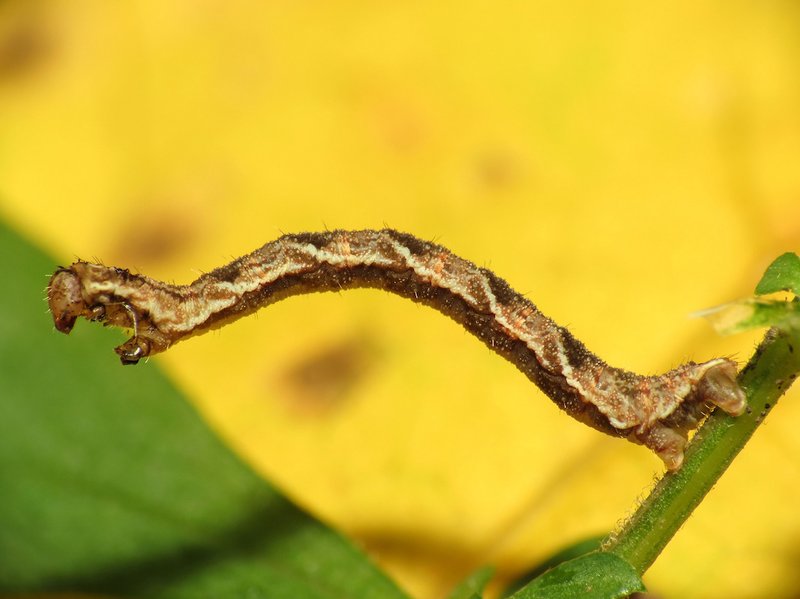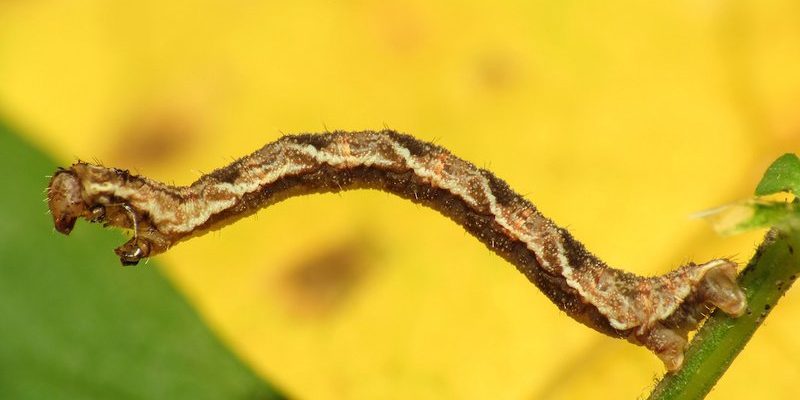
You might be wondering why temperature is such a big deal for inchworms. Well, like many creatures in the animal kingdom, they’re *ectothermic*, which means they rely on external sources to regulate their body temperature. So, when the weather shifts, their bodies respond accordingly. Imagine trying to walk in the snow without a coat; you’d move a lot slower, right? That’s what happens to inchworms when things heat up or cool down.
Understanding Inchworms and Their Habitats
Inchworms are actually the larval stage of certain moths, predominantly in the Geometridae family. They thrive in a variety of environments, from lush gardens to dense forests. Their habitats usually include plenty of leafy plants, which serve as both food and hiding spots.
When we talk about temperature changes, we’re not just discussing extreme weather. Regular fluctuations—like the difference between a sunny day and a chilly evening—affect inchworms every day. In fact, you could think of inchworms as tiny weather vanes, constantly adjusting their pace and activity based on the temperature around them.
These adaptable creatures are often seen inching along branches, using a unique looping motion to travel. This movement not only helps them blend in with their surroundings but also conserves energy, especially when temperatures drop. Here’s a fun analogy: it’s like how some people bundle up and slow down when it’s cold outside—they want to stay warm and make the most of their energy.
The Effects of Cold Temperatures on Inchworms
When temperatures start to dip, inchworms respond in a few distinct ways. For one, their metabolic rates decrease. Think of it this way: if you were stuck outside in the cold without a jacket, you’d probably feel sluggish, too. This is because cold affects how quickly their bodies can process food and energy.
In chilly conditions, inchworms become less active and may even remain hidden under leaves or in the soil. This behavior helps them avoid freezing temperatures and conserve energy. In winter, some species enter a state called diapause, which is like a deep sleep, allowing them to survive until it’s warmer.
Their adaptability is fascinating. If you were to observe them during a cold snap, you’d notice they hardly move, waiting for the sun to warm things up again. This survival strategy is crucial, as it helps them withstand extreme cold without falling victim to predators or harsh conditions.
How Warm Temperatures Energize Inchworms
Just as cold weather can slow inchworms down, warm temperatures energize them. When the sun shines and the temperatures rise, you might see them becoming more active, moving around to eat and explore their surroundings. It’s as if they’ve received an espresso shot!
In warmer weather, inchworms increase their metabolic rate, allowing them to digest food faster and grow more quickly. This energy boost is essential for their development, as they need to eat enough to fuel their transformation into adult moths. If you’ve ever watched an inchworm in a warm environment, you might notice how they traverse branches with more purpose, making it easier for them to find food.
It’s remarkable how these creatures can take advantage of a sunny day. You can almost picture them stretching out, absorbing the warmth, and getting ready for a day of munching on leaves. By adjusting their behavior according to the temperature, they maximize their chances of growth and survival.
Temperature and Inchworm Lifecycle Stages
Temperature doesn’t just affect inchworms’ activity; it also plays a significant role in their lifecycle. Believe it or not, the weather can influence when inchworms hatch from their eggs and when they pupate.
In warmer conditions, eggs might hatch sooner than in cooler weather. This means that if the spring is unusually warm, you could see inchworms appearing earlier in the season. Similarly, temperature affects how quickly they develop into adults. Warmer temperatures can speed up their growth, allowing them to transition from larva to moth faster, which is beneficial for reproduction.
Each stage of their lifecycle is tightly linked to their environment. For instance, if it gets too cold too quickly, some may not survive to become moths. It’s a delicate balance that underscores the importance of temperature in nature.
Adaptation: How Inchworms Survive Temperature Changes
Inchworms use a variety of adaptations to handle changes in temperature. Beyond simply slowing down or speeding up, they can hide in crevices, beneath leaves, or even burrow into the ground to find a more suitable microclimate. This ability to seek shelter plays a vital role in their survival.
Another fascinating adaptation is their color-changing capability. Some inchworms can shift their colors based on the environment—lightening up to blend in with the sunlit leaves or darkening to match the shaded areas. This isn’t just for camouflage; it also helps regulate body temperature. Darker colors absorb more heat, while lighter colors reflect it.
These survival skills are impressive when you consider how tiny inchworms are. They may not have the fancy technology we do, but they’ve developed practical strategies over millions of years to thrive in a changing world.
Why Understanding Inchworm Behavior Matters
So why should we care about how inchworms react to temperature changes? For one, they’re an essential part of the ecosystem, serving as both herbivores and prey for various predators. Understanding their behavior can give us insights into the health of their environment.
Additionally, inchworm behavior can serve as a climate change indicator. As global temperatures fluctuate, studying these little creatures may help scientists understand broader ecological shifts. If inchworm populations start to decline or change their activity patterns, it might signal something larger is happening in their environment.
Moreover, watching inchworms can teach us about adaptability. They remind us that adjusting to changes is key to survival—whether in nature or in our lives.
Inchworms are small but mighty creatures, using temperature changes to navigate their world. They slow down in the cold, gearing up for action in warmth, and their survival strategies are both remarkable and essential to their lifecycle.
Understanding how these tiny beings react to their environment not only enriches our knowledge of nature but also points to crucial environmental shifts. So, the next time you spot an inchworm inching along, take a moment to appreciate the intricate relationship between temperature and their survival. Just like us, they adapt, evolve, and endure—making their way through a world that’s constantly changing.

